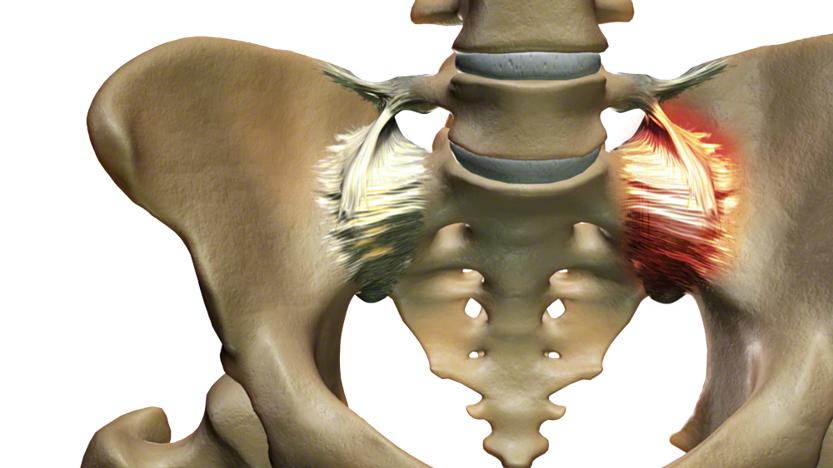The sacroiliac joint (SI joint) is located in the pelvis; it links the iliac bones (pelvis) to the sacrum (lowest part of the spine above the tailbone). It is an essential component for energy transfer between the legs and the torso.
SI Joint Pain Symptoms
- Lower back pain (below L5)
- Sensation in lower extremity; pain, numbness, tingling, weakness
- Pelvis/buttock pain
- Hip/groin pain
- Feeling of leg instability (buckling, giving way)
- Disturbed sleep patterns due to pain
- Disturbed sitting patterns (unable to sit for long periods, sitting on one side)
- Pain when going from sitting to standing
Causes and Risk Factors of SI Joint Pain
Trauma and degeneration are two leading causes of SI joint dysfunction. Sacroiliac joint trauma can occur during motor vehicle accidents, falls on the buttocks, lifting and/or twisting, pregnancy and childbirth. Sacroiliac joint degeneration can occur as a result of previous lumbar spine surgery, stresses to the SI Joint due to leg length differences, osteoarthritis, and prior infection of the SI joint.
Treatment for SI Joint Pain
Once the SI joint is confirmed as the cause of your symptoms, treatment can begin. Some patients respond well to physical therapy, use of oral medications, or injection therapy. These treatments are often performed repetitively, and frequently symptom improvement using these therapies is temporary. If non-surgical treatment options have been tried and do not provide long-term relief, your surgeon may consider other options, including the minimally invasive iFuse procedure.
